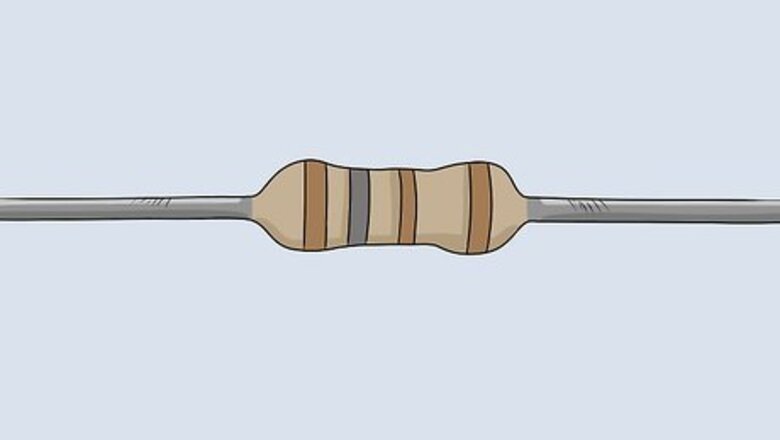
views
Using a Resistor to Determine Inductance

Choose a 100-ohm resistor with 1% tolerance. Resistors have colored bands that can help you tell them apart. A 100-ohm resistor will have a brown, black, and brown band. The final band at the far end will also be brown to represent 1% tolerance. If you have a bunch of resistors to choose from, pick one with a known resistance value. Resistors are labeled when they are new, but they can be easy to mistake once they are out of the packaging. Always test inductance using a resistor you are familiar with to ensure you get an accurate result.
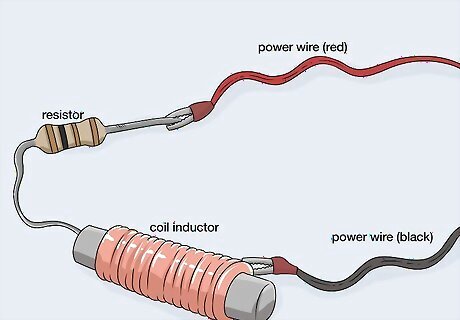
Connect the inductor coil in series with the resistor. In series means the current passes through the coil one after the other. Start setting up a circuit by placing the coil and resistor next to each other. Make sure they have 1 terminal touching. To finish the circuit, you will also need to touch power wires to the exposed ends of the resistor and inductor. Purchase power wires online or at a hardware store. They will usually be red and black so you can easily tell them apart. Touch the red wire to the exposed end of the resistor and the black wire to the opposite end of the inductor. If you don’t already have one, consider getting a breadboard. The holes in the board help a lot with connecting the wires and components.
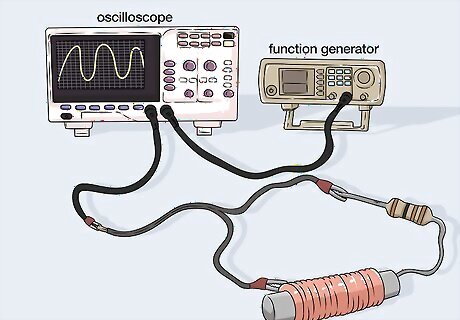
Wire a function generator and an oscilloscope into the circuit. Take the output leads from the function generator and plug them into the oscilloscope. Then, turn on both devices to make sure they are working. Once they are both on, take the function generator’s red output lead and connect it to the red power wire in your circuit. Connect the oscilloscope’s black input lead to the black wire in your circuit. A function generator is a piece of electrical testing equipment that sends electrical waves through the circuit. It allows you to control the signal moving through the coil so you can accurately calculate the inductance. The oscilloscope is used to detect and display the signal voltage running through the circuit. You need it to visualize the signal you’re setting up with the function generator.
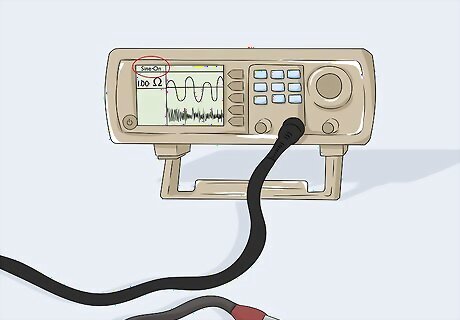
Run a current through the circuit with the function generator. The function generator simulates currents the inductor and resistor would receive if they were actually being used. Use the control knob on the device to start the current. Try setting the function generator to something like 100 or 50 ohms. Make sure the generator is set to sine waves so you see big, curving waves flowing steadily across the screen. Access the generator’s settings to change the wave type. Function generators can make square waves, triangular waves, and other varieties that aren’t useful for calculating inductance.
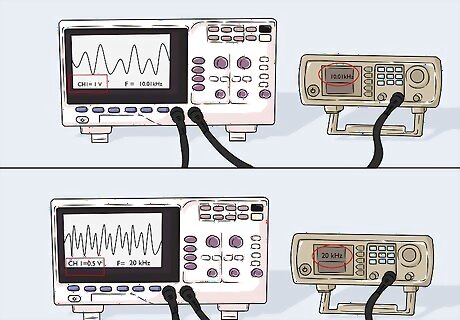
Monitor the input voltage and resistor voltage on the screen. Look to the oscilloscope screen for a pair of sine waves. One will be controllable through the function generator. The other, smaller wave comes from where the inductor and resistor meet. Adjust the function generator’s frequency so the junction voltage listed on the screen is half of the original input voltage. For example, set the generator frequency so the voltage between the peaks of both waves is listed as 1 V, which you will see on the oscilloscope. Then, change it until the voltage is 0.5 V. The junction voltage is the difference between the sine waves on the oscilloscope. You need it to be half of the signal generator’s original voltage.
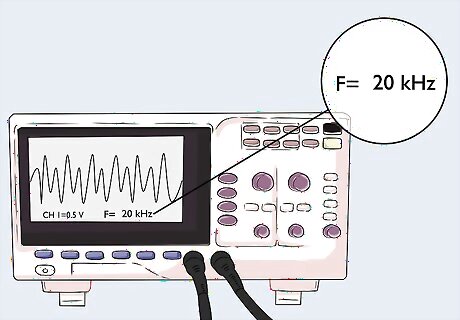
Find the frequency of the functional generator current. This will be displayed on the oscilloscope. Check the numbers on the bottom of the readout to find one in kilohertz, or kHz. Note this number, since you will need to use it in a calculation to find the inductance. If you need to convert hertz (Hz) to kilohertz, remember that 1 kHz = 1,000 Hz. For instance, 1 Hz / (1,000 Hz/kHz) = 0.001 kHz.
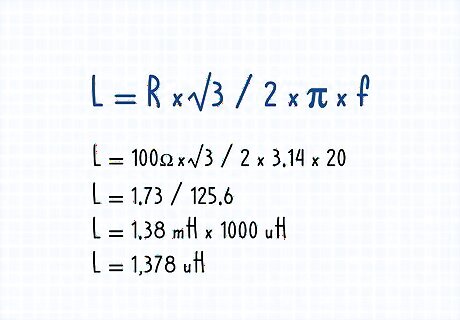
Calculate the inductance using a mathematical formula. Use the formula L = R * sqrt(3) / (2 * pi * f). L is the inductance, so you need the resistance (R) and the frequency (f) you figured out earlier. Another option is to type your measurements into an inductance calculator, such as this one. Start by multiplying the resistance of the resistor by the square root of 3. For instance, 100 ohms x 1.73 = 173. Next, multiply 2, pi, and the frequency. For example, if the resistance was 20 kHz: 2 * 3.14 * 20 = 125.6. Finish by dividing the first number by the second number. In this case, 173 / 125.6 = 1.38 millihenries (mH). To convert millihenries into microhenries (uH), multiply by 1,000: 1.38 x 1,000 = 1378 uH.
Measuring with an LCR Meter
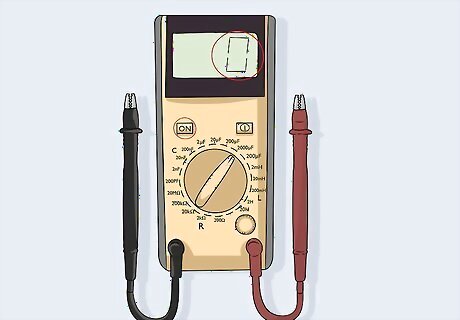
Power the LCR meter and wait for it to turn on. A basic LCR meter is very similar to a multimeter normally used to measure things like voltage and current. Most meters are handheld with a readout screen that will display 0 after you press the power button. If it doesn’t display 0, press the reset button to set the meter at 0. There are also larger electronic machines that make the testing process even easier than normal. They often have room for you to plug in the inductor coil for a more accurate result. Multimeters cannot be used to measure inductance. They don’t have the ability, but fortunately, inexpensive handheld LCR meters are available online.

Set the LCR to measure L, or inductance. An LCR meter can take several measurements, which will be listed on the dial. L means inductance, so it is the one you need. For handheld meters, turn the dial to point to the L. If you’re using an electronic device, press the buttons on the screen to set the machine to L. LCR meters have multiple settings, so make sure you’re using the correct one. The C setting is for capacitance and the R is for resistance.
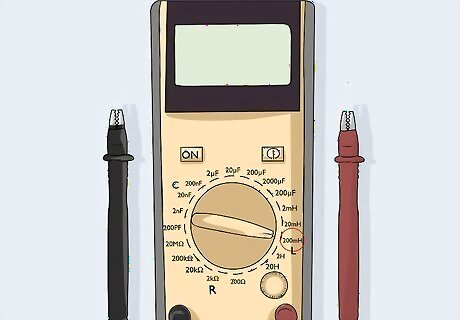
Set the meter to 100 kHz at 1 volt. LCR meters generally offer several different test settings. The lowest inductance test is usually something like 200 uH. If you’re setting a tabletop meter, 100 kHz at 1 volt is perfect for most devices. Using the wrong setting makes the test more inaccurate. Most LCR meters are meant to test at a low current, but you should still avoid making the current stronger than what the inductor coil can handle.
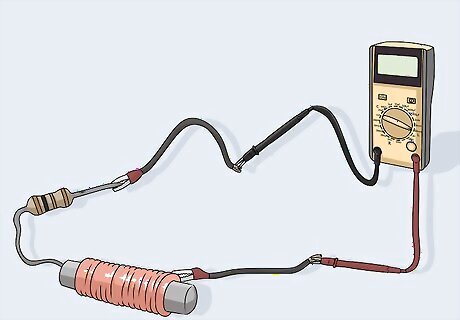
Connect the leads to the LCR meter. The meter will have a black and red lead just like a multimeter. The red lead fits in the plug marked as positive, while the black one fits in the plug marked as negative. Touch the leads to the terminal ends of the device you are testing to begin sending a current through it. Some LCR meters have a slot where you can plug in testing objects like capacitors and coils. Fit the device’s terminals into the sockets to test it.
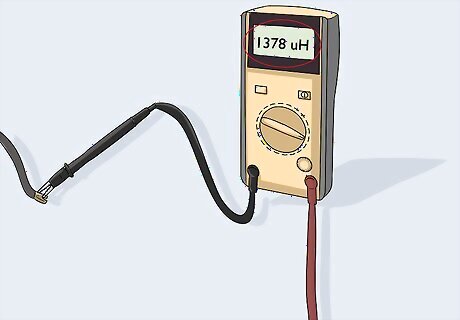
Check the display screen to figure out the inductance. LCR devices perform inductance tests almost instantaneously. You should notice the readout on the screen change right away. It will show you a number in microhenries (uH). Once you have the number, you can shut off the meter and remove the device.
Calculating Inductance on a Voltage-Current Slope
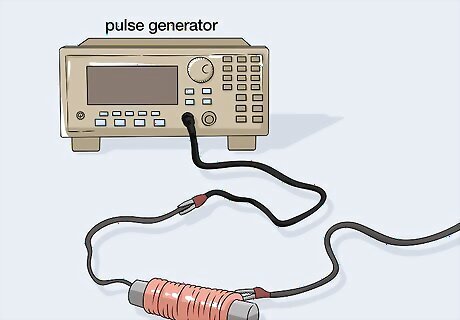
Connect the inductor coil to a pulsed voltage source. The easiest way to get a pulsed current is by purchasing a pulse generator. It works similar to a regular function generator and hooks up to a circuit the same way. Hook the output lead from the generator to a red power wire you will need to connect to a sense resistor. Another way to get a pulse is by building the circuit to make your own electromagnetic pulse. It can damage nearby electronics, so be careful when using it. Pulse generators give you more control over the current than a custom-built circuit, so rely on a generator if you have one available.
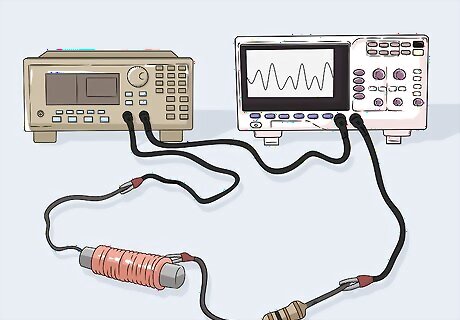
Set up the current monitors with a sense resistor and oscilloscope. You will need a current sense resistor to put into the circuit. Set it behind the inductor, making sure the terminals touch before connecting a red power wire to the opposite end. Add the oscilloscope next by connecting its black input lead to a black power wire attached to the end of the inductor. Test the monitors after wiring everything into place. If everything works, you will see movement on the oscillator screen when the pulsed current activates. A current sense resistor is a special kind of resistor that takes up a minimal amount of power. It’s also called a shunt resistor and it’s necessary for getting an accurate voltage reading.
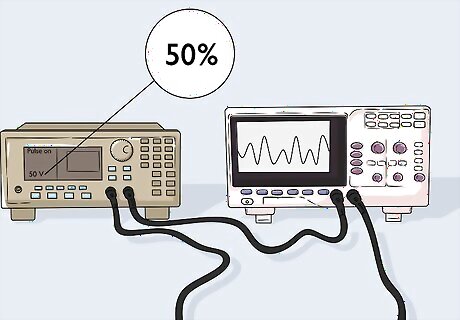
Set the cycle of the pulse to 50% or less. Watch the pulse as it moves across the oscilloscope screen. The high points of the wave indicate when the pulse is active. Those high points need to be about the same length as the low points. The pulse cycle is the length of one complete wave on the oscilloscope. For example, the pulse could be active 1 second, then off 1 second. The wave pattern on the display would look very consistent since the pulse is only active for half the time.
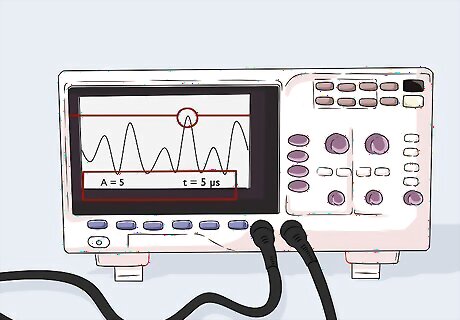
Read the peak current and the amount of time between voltage pulses. Check the oscilloscope for these measurements. The peak current is the crest of the tallest wave you see on the screen and will be measured in amperes. The time between these crests will be shown in microseconds. Once you have both measurements, you can calculate the inductance. There are 1,000,000 microseconds in a second. If you need to convert to seconds, divide the microseconds by 1,000,000.
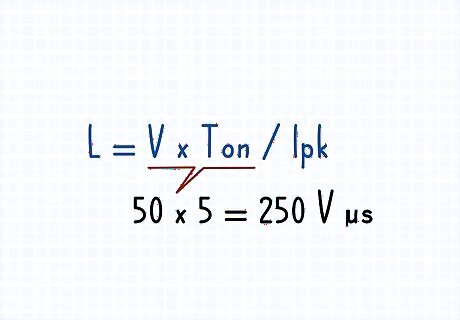
Multiply the voltage and the length of the pulses. Use the formula L = V*Ton/Ipk to calculate the inductance. All of the numbers needed should be right there on the oscilloscope. V stands for the voltage delivered by the pulses, Ton stands for the time between each pulse, and lpk means the peak current you measured earlier. For example, if a pulse of 50 volts is delivered every 5 microseconds: 50 x 5 = 250 volt-microseconds. Another option is to type the numbers into a calculator, such as this one.
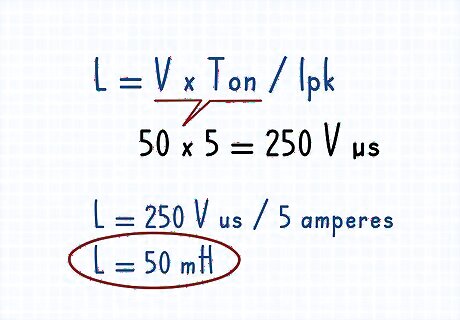
Divide the product by the peak current to get the inductance. Refer to the oscilloscope readout to determine the peak current. Plug it into the formula to successfully finish the calculation! For example, 250 volt-microseconds / 5 amperes = 50 microhenries (mH). Although the math seems pretty simple, setting up the measurement is more complex than other methods. Once you have everything working, figuring out the inductance is a snap!
















Comments
0 comment